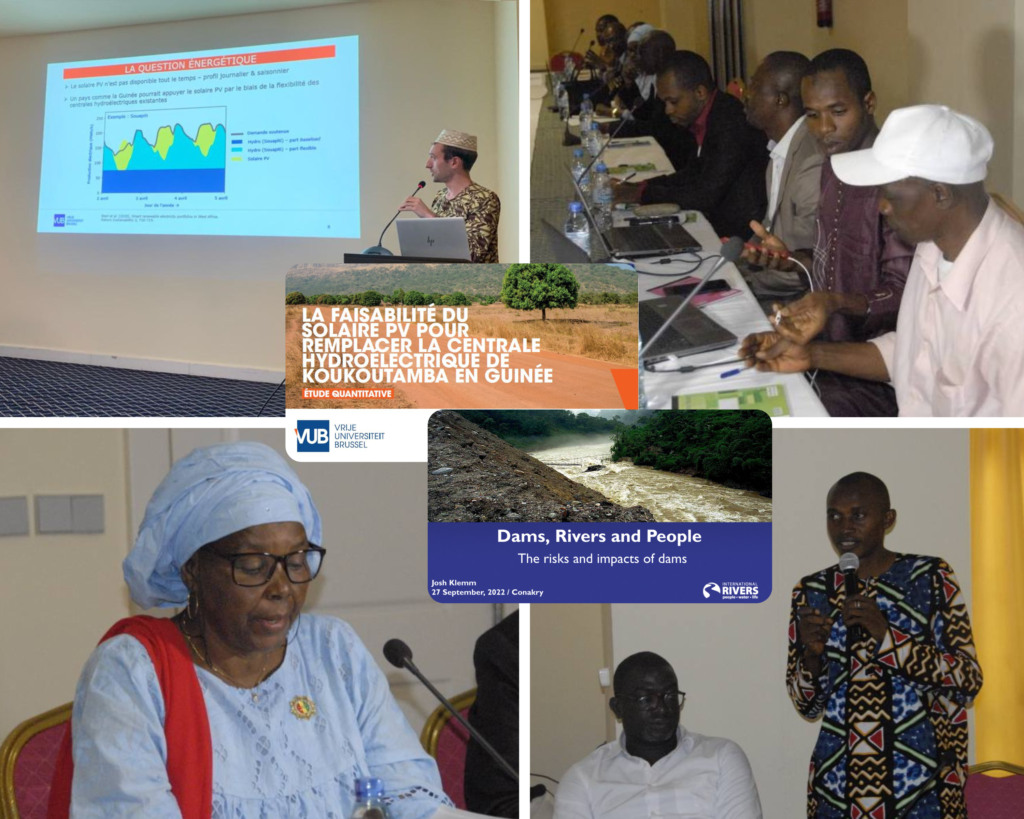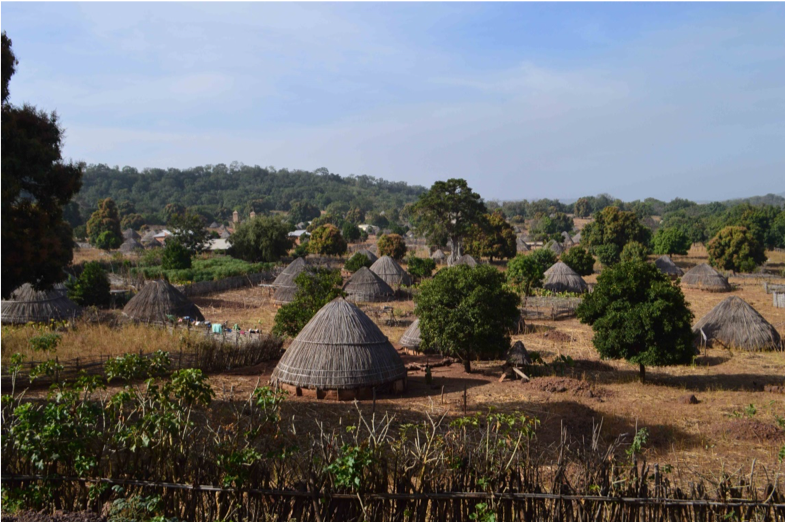New study shows solar alternatives would cost less and outperform the proposed Koukoutamba Dam in Guinea
by Josh Klemm & Ibrahima Kalil Bamba
During a trip to Guinea last month, International Rivers and Centre de Commerce International pour le Développement (CECIDE) hosted a launch event for our latest study, “The feasibility of solar PV to replace the Koukoutamba hydropower plant in Guinea“. The event formed part of our collective efforts to develop a sustainable, renewable energy pathway for Guinea that protects rivers and the rights of communities that depend on them.

During the event, which included attendees from the Guinea National Transitional Council (CNT), media, civil society, and dam-affected communities, study author Dr. Sebastian Sterl from the International Renewable Energy Agency (IRENA) presented his work comparing the planned Koukoutamba dam to solar power and prospects for meeting Guinea’s energy needs. The study found that Guinea could readily accommodate large amounts of solar power into the existing grid, and this would be both cheaper and faster to deploy than the Koukoutamba dam.
“Guinea is best placed among West African countries to integrate high shares of variable renewable energy, especially solar PV,” noted Dr. Sebastian Sterl.
The study found that solar PV could replace Koukoutamba’s electricity consumption in Guinea and cost 58% less by 2030.

(Status: critically endangered)
Photo by Liran Samuni/Tai Chimpanzee Project
The study also revealed that Koukoutamba is expected to perform poorly from both a cost and an energy generation perspective. The impetus for the study was driven in part by the Koukoutamba dam’s high costs and significant and irreversible impacts on the environment and local communities. If built, the Koukoutamba dam would cause the displacement of nearly 9,000 people and flood a national park established to protect numerous species, notably the critically endangered Western chimpanzee.
These findings were reinforced in a presentation by TMP Systems, where they showcased Riverscope, a geospatial assessment tool that assessed the Koukoutamba dam project. This first-of-its-kind study quantifies in financial terms for investors and energy planners the costs that expected delays resulting from environmental and social impacts would entail. TMP tools have been used to screen investments for risk by financial institutions all over the world. Offered for use in Guinea, the TMP assessment noted Koukoutamba showed elevated risks of delays and accompanying cost overruns given its environmental and social risk profile.
The event also served as an opportunity for community members impacted by the Souapiti dam on Guinea’s Konkoure River to share testimony of the impacts wrought by the dam. Among others, people cited crumbling houses, infertile land causing widespread hunger and food insecurity, and the risk of conflict with host communities over scarce resources.
Community representatives from villages to be impacted by the Koukoutamba dam were also in attendance. They had themselves visited Souapiti-impacted communities where they were told about the many unmet promises about livelihood restoration. “Souapiti communities are living in hell,” noted one community representative who visited the Souapiti resettlement site. CNT representative Hadja Fatoumata Yèbhè, meanwhile, acknowledged the need to “find the right balance between infrastructure development and ensuring that communities are able to continue their livelihoods.”
The visit to Guinea also provided an opportunity to visit communities near Dabola who would be displaced by the Koukoutamba dam’s reservoir. Community members expressed their unanimous desire to remain where they are.
“My grandparents have lived here for seven generations,” noted one community elder. “They are all buried here. If God wills it, we will remain here.”

Some local representatives participated in the energy workshop in Conakry, and during our visit shared the results of the energy study with their communities, which was met with great interest. “We would welcome solar energy that could meet our needs without forcing us to leave the land of our ancestors,” said one local community leader.
The prospects for the communities to stay remain unclear. Koukoutama had been heavily promoted by the World Bank before it withdrew its support because of the dam’s significant and irreversible impacts on the Moyen Bafing National Park. China Ex-Im Bank was widely expected to finance the dam, but interest seems to have cooled at the moment. China hosting the Convention on Biological Diversity’s major summit in December, meanwhile, has drawn attention to the impact of its overseas footprint. Indeed, the Koukoutamba case could signal a change of approach from Chinese actors, after China Ex-Im reportedly scrapped plans to finance the dam over its impacts on Guinea’s chimpanzees and other species. Last year, International Rivers released a report focused on the biodiversity impacts of proposed hydropower dams including Koukoutamba.
With the economics of dams increasingly faulty because of ballooning costs, climate change wreaking havoc on hydropower energy production, and the growing agency of Guinean civil society and communities, it’s time to lay the Koukoutamba dam to rest and pursue options best suited to meeting modern energy needs of Guineans who lack it.

